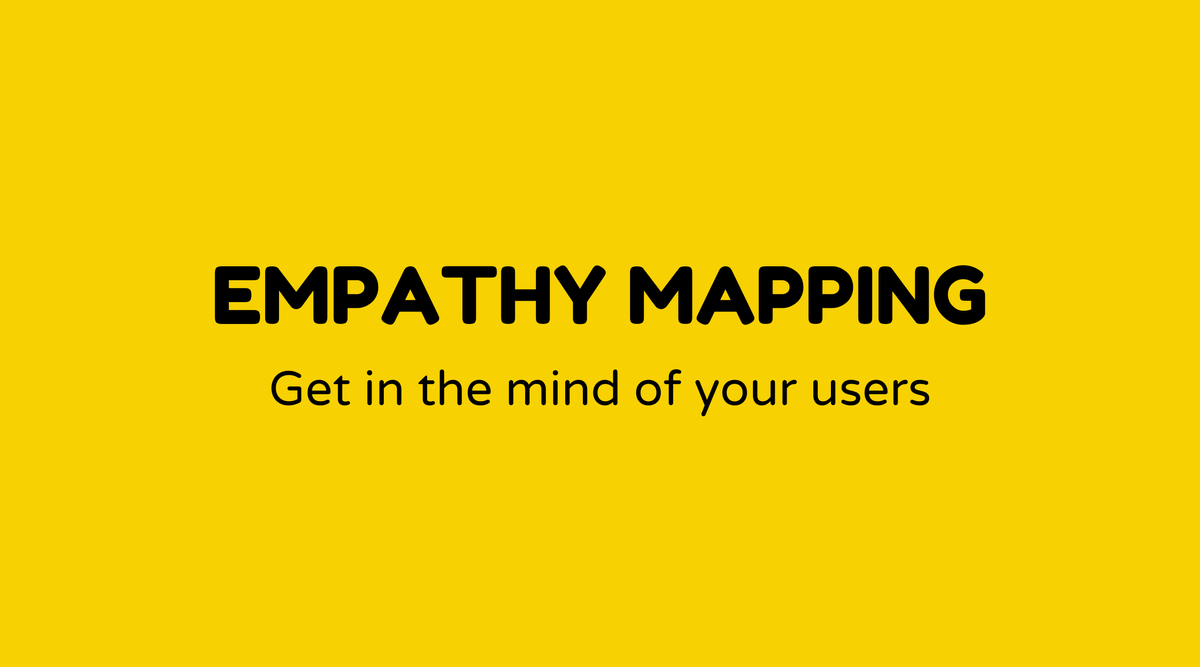Empathy Mapping

Overview of Empathy Mapping:
Empathy Mapping is an essential element of understanding customer needs and perspectives. It serves as a collaborative exercise that assists teams in visualizing what customers think and feel. By nurturing empathy with users, we ensure that products address real needs. Interested in empathy mapping? Let’s get started!
Why Empathy Mapping Matters:
Understanding the "customer’s mindset" enables teams to develop more user-centered designs and solutions. Empathy Mapping functions as a connection between an organization and the authentic experiences of its customers. And the benefits extend beyond design teams; marketers, product developers, and even executives can gain valuable insights. This process enhances teamwork and fosters a common understanding of users. Who isn’t on board with that?
What is Empathy Mapping:
An empathy map is a visualization tool that captures a user’s sensory experiences: what they say, think, do, and feel. This tool goes beyond demographics and explores their emotional and cognitive landscape. An empathy map typically consists of four sections:
- Says: Note the exact words a user expresses.
- Thinks: Understand what the user is considering, especially beyond their spoken thoughts.
- Does: Observe the actions and behaviors of the user.
- Feels: Recognize the user's emotional responses during interactions.
This layout creates a more comprehensive view of the customer, aiding teams in identifying pain points and opportunities.
How to Conduct Empathy Mapping:
Creating an empathy map can be straightforward with adequate planning. Here’s a structured approach:
-
Gather a Team: Assemble a diverse group from various departments to encourage different viewpoints.
-
Identify Target Users: Determine whom you will be mapping, often focusing on a specific user type or persona. Ensure they reflect a meaningful segment of your audience.
-
Collect Insights: Utilize existing data, interviews, surveys, and observations to inform your mapping process. Genuine user feedback is critical here.
-
Construct the Map:
- Use large paper or digital tools like Miro or MURAL.
- Divide the map into sections: Says, Thinks, Does, and Feels.
-
Populate the Sections: Delve into the user’s experiences. Capture everything relevant; no detail is too minor.
-
Review and Refine: Discuss collectively. Add, remove, or adjust findings to ensure accuracy.
-
Disseminate Findings: Share empathy maps with broader teams to influence product and strategic directions.
Sample Agenda for an Empathy Mapping Workshop:
Here’s a typical agenda to help structure your workshop:
| Time | Activity | Description |
|---|---|---|
| 10 mins | Introduction | Welcome, objectives, the importance of empathy mapping. |
| 20 mins | Presentation on Empathy Mapping | Overview of sections, past examples, and success cases. |
| 30 mins | User Persona Identification | Specify who you're mapping — prioritize clarity! |
| 45 mins | Brainstorming Session | Participants fill each section with insights. |
| 25 mins | Break | Time for refreshments and casual discussion. |
| 45 mins | Group Review and Edit | Collaboratively discuss and refine the empathy map. |
| 30 mins | Final Presentation and Sharing | Present findings — discuss insights and applications. |
| 20 mins | Next Steps and Wrap-up | Outline actionable steps and gather feedback from participants. |
Examples of Empathy Mapping:
Empathy Mapping in Practice demonstrates real-world applications. Imagine a company launching a new app. Through empathy maps, they learn that users appreciate the features but find navigation cumbersome. This insight initiates a UI redesign, enhancing user satisfaction. Fascinating, isn’t it?
In another example, a healthcare provider utilizes empathy mapping for patient experiences — a method to better grasp their concerns and information requirements. Understanding made straightforward yet impactful.
FAQs
Why is Empathy Mapping vital for design teams?
Empathy Mapping encourages a user-centric approach by revealing emotional and cognitive dimensions of users, guiding design choices.
How often should we perform Empathy Mapping exercises?
Ideally, whenever significant new user insights arise or when commencing a new project phase, to keep user needs prioritized.
Can empathy maps replace user personas?
They complement user personas, offering deeper insights into users’ emotional responses.
How can digital tools improve the Empathy Mapping process?
Platforms like Miro or MURAL enable real-time collaboration, particularly beneficial for remote teams, enabling easy edits and sharing.
How detailed should an empathy map be?
Detailed enough to capture relevant insights without becoming overly complex. Aim for clarity and actionable insights.
What’s the biggest mistake to avoid in Empathy Mapping?
Avoid making assumptions. Depend on actual user data and feedback rather than presuming user experiences.



